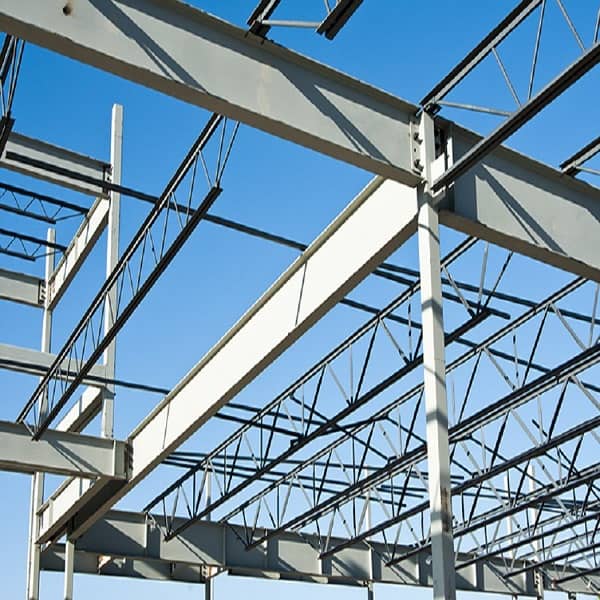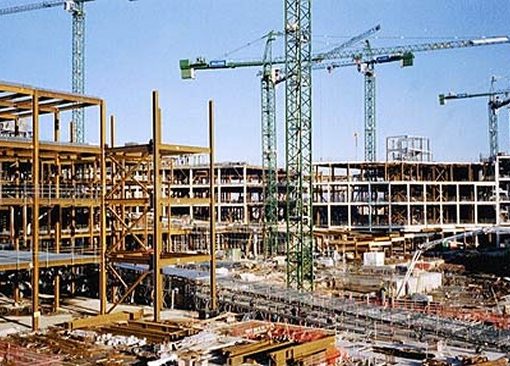In the past five years, the modular construction industry has experienced a huge surge of growth, doubling to more than $8 billion in revenue.
While this kind of construction currently represents a small subset of the $1 trillion construction industry, a U.S. Chamber of Commerce report found that 67 percent of contractors believe that the modular construction industry will experience increased demand in the coming years.
That same report cites a variety of benefits of prefabrication, including increased onsite efficiency, improved labor productivity, improved safety and lower construction costs.
In addition to these benefits, modular construction also represents a huge leap forward in terms of environmental sustainability, including great opportunities for more responsible use of building materials and more eco-friendly designs.
What Is Modular Construction?
Modular buildings, also known as prefabricated buildings, are built almost entirely in off-site factories, as opposed to traditional buildings, which are constructed on site. Modular construction involves fabricating a building in smaller units, called modules, which are later transported to a construction site and assembled.
- In the factory, modules are built using assembly-line systems and construction technology, leading to an efficient and standard process. The use of precise modeling and construction in the factory reduces the need for change orders and adjustments.
- Before leaving the factory, walls, floors, roofs, doors and windows are all built and installed, and wiring, plumbing and ductwork are added as well. Many modular buildings are now constructed with fixtures and finishes already in place before they ever leave the factory.
- Once the modules are built, they are transported to the building site on flatbed trucks and assembled in a predetermined order, with much of the labor involving the use of cranes to set the modules in place onto a pre-set foundation.
- After the modules are set in place, they are then seamlessly fitted together by construction workers and other tradespeople to create a unified building. The result is a complete building, often finished twice as fast as a similar building on a traditional site.
Eco-Friendly Aspects of Modular Construction
While modular building has clear benefits in terms of worker safety, site efficiency and construction costs, there are also impressive environmental benefits. The benefits of prefabricated construction begin in the factory, continue on to the building site and last through the lifetime of the building.
1. Decreases Construction Waste
Because multiple modules are being constructed simultaneously, materials that would be discarded on a normal construction site can be reused for other projects in a modular construction facility. Traditional construction generates around 56 million tons of debris every year, and reducing this amount would have huge environmental benefits.
2. Uses Recycled Materials
Modular buildings use a variety of sustainable materials, and many of those materials are recycled, including wood, steel and aluminum, which can be used to form siding, frames and roofs. Some modular construction companies use innovative materials like oriented strand board (OSB), which is made from fast-growing, sustainably sourced wood. Modular design professionals are getting increasingly creative with materials in their buildings, like the Wikkelhouse, a structure made entirely of recycled cardboard, expected to last 100 years.
3. Decreases Energy Consumption During Construction
Since construction happens in a controlled factory setting rather than on site, overall energy use is decreased in the course of making a modular structure. During construction, energy usage is optimized using machine learning to create an environmentally sound building process. Additionally, on-site energy expenditures are significantly lower, as construction times are substantially decreased with modular buildings.
4. Reduces Emissions
A United Nations report found that 39 percent of global carbon emissions result from the construction field, and much of that is the result of inefficient transportation of labor, equipment and materials. By reducing overall transportation needs and optimizing the delivery of modules, modular construction is able to reduce total deliveries to building sites by 90 percent, which has an enormous effect on total emissions.
5. Uses Insulation That Reduces Energy Needs
Modular construction frequently includes a variety of features that reduce overall energy usage. One extremely beneficial design choice is the use of “structural insulated panels” (SIPs), which combine two exterior layers with insulated foam, creating a seal that is 15 times more airtight than fiberglass insulation. As a result, modular buildings maintain their temperature very well and require less heat or air conditioning.
6. Integrates Solar Panels
Many modular buildings are designed with solar energy in mind. Combined with excellent insulation, solar panels can power the modest energy needs of a well-designed modular structure, as is the case with the KODA, which has sleek solar panels included on its roof. A simple solar set up can prevent 2.5 tons of carbon emissions annually.
7. Features Green Fixtures and Finishes
Modern modular designs include a slew of eco-focused features, like dimmable LED lighting, solar water heaters, occupancy sensors, batteries for energy storage, triple-paned windows and electric carports. Innovative companies like PlantPrefab put environmentally sustainable features first, using materials with no volatile organic compounds (VOCs) and natural airflow technology to create designs that are healthier for humans and the planet.
8. Built to Last — and to be Reused
One of the distinct advantages of modular construction is that the designs aim for resilience and long lifespans, but this is also true of many traditional buildings. Unique to modular buildings, however, is the ease with which they can be disassembled — either to be reused in other locations and configurations or recycled for new projects. When considering long-term sustainability, modular building has distinct advantages, especially in helping to reduce debris generated by demolition, which accounts for more than 500 million tons of waste each year.
How Modular Buildings Provide Sustainable Construction Solutions
Modular construction technology is a powerful remedy for many challenges facing the construction industry today, like high costs and labor shortages. Importantly, though, modular construction also has a beneficial effect on the environmental impacts of construction and encourages the design of buildings that utilize green energy for a more sustainable future.
Prefabrication also allows for more quick and cost-effective building processes, which could be used to help alleviate the affordable housing crisis we are currently facing. Finally, the efficiency brought on by modular construction could be absolutely necessary as construction sites adapt to industry changes brought on by the coronavirus pandemic.
Overall, modular construction technology could prove to be a vital source of change in the industry — and especially for our impact on the planet — in the coming years.










